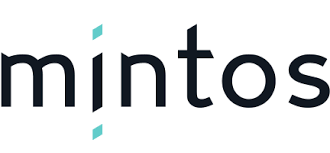FIREOF now offers risk categories for its loans listed on Mintos p2p lending platform
Spanish mortgage lender FIREOF Management, which recently launched on Mintos, now offers investors the opportunity to invest in its loans by selecting them based on loan risk categories. The inclusion of the risk categories will allow investors to make more informed investment decisions.
FIREOF loans have a historical track record of 0% loss given default (LGD) and 0% bad debt rate due to the high loan-to-value ratio (average below 35%), thorough analysis of the borrowers and collateral as well as the personal guarantee provided for the loans. The risk of losing the principal has historically been very low and the main risk has been related to liquidity – locking in the investment during the court collection process which varies and averages 18 months.
FIREOF will provide loan risk ratings in each scoring category based on the predicted probability of default (PD) – assessment of the probability of loans becoming 90 days late when the court collections process is being initiated.
FIREOF Risk Categories
| Category (Score) | PD* | Interest rate to investor |
| AAA (1000-851) | 0,63% – 0,70% | 5,00% – 6,00% |
| AA (850-701) | 0,95% – 1,04% | 5,50% – 6,50% |
| A (551-700) | 3,76% – 4,15% | 6,00% – 7,00% |
| BBB (500-551) | 5,04% – 5,57% | 6,50% – 7,50% |
| BB (451-500) | 5,79% – 6,40% | |
| B (331-450) | 7,24% – 8,00% | |
| C (0-330) | 9,78% – 10,81% |
* Probability of default (loans going into court collection, more than 90 days past due). Historically FIREOF has been able to recover 100% of principal for all defaulted loans.
FIREOF bases the risk categories on their scoring model that is being used to assess the riskiness of the loans they are issuing. Their scoring model, based on a FICO score (a type of credit score created by the Fair Isaac Corporation), has been specifically designed for the mortgage secured lending business in Spain. It takes into account various factors in three main areas to determine the credit quality: borrower profile, collateral liquidity and loan type risk.
FIREOF takes into account the loan type risk (35% of score), collateral liquidity (35-40%) and borrower profile (25-30%) to determine the credit score for each loan. Scores range between 0 and 1 000. In general, scores above 550 indicate a good credit quality. In contrast, loans with scores below 500 mean the credit quality is inferior – borrowers might find it difficult to repay monthly instalments, the quality of the collateral is sub-optimal or the loan type holds a larger risk. Currently, FIREOF plans to offer only loans with category BBB and higher for investment to Mintos investors.
Loan Type Risk
In order to determine the loan type risk, different aspects of loan parameters are taken into account, including the amortization type, the term of the loan, APR charged to the borrower, loan amount and reason for taking the loan.
Collateral Liquidity
To reach an acceptable score for collateral, collateral type (internal liquidity), market size and liquidation price (external liquidity) are analysed together with government public ratios to measure the potential of selling the collateral in case the borrowers of FIREOF fail to repay their liabilities.
Loan to value (LTV) and loan to liquidation value (LTLV) are calculated on a principal cap basis. In addition, fraud detection triggers are deployed at an early stage.
Borrower Profile
As a general rule, borrower information is provided and analysed by the Spanish central bank. The information analysed includes the average default probability by age, debt to income ratio (DTI) and payment incident records in combination with the minimum income (of the borrower). The decision-making process is continuously improved based on past performance information
Established in 2015, FIREOF is an asset-secured lending business whose mission is to provide a financial bridge to Spanish consumers. FIREOF pursues a win-win relationship with their borrowers. The company is fully licensed and audited and it provides its credit products through established brokers.
